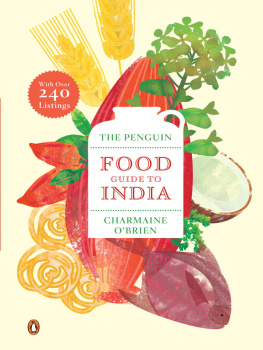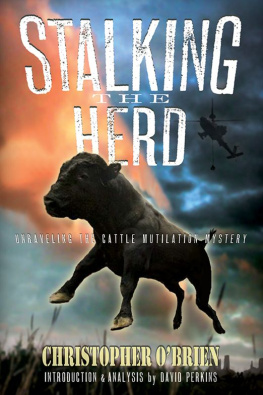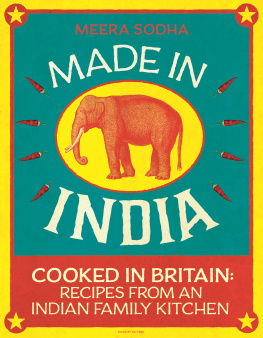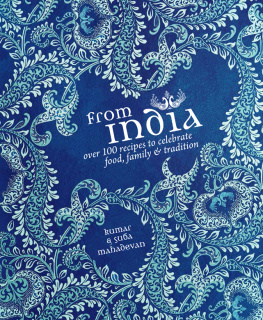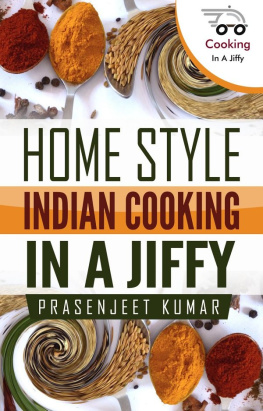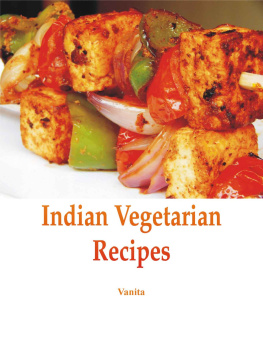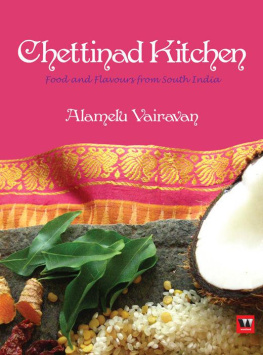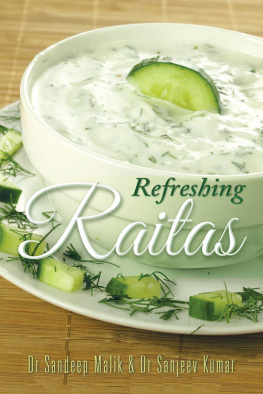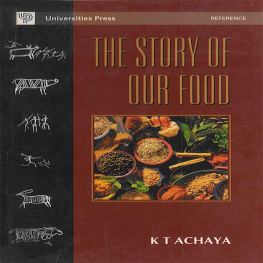Charmaine oBrien is an independent culinary writer, historian and educator. She is the author of Flavours of Delhi: A Food Lovers Guide, Recipes from an Urban Village: A Cookbook from Basti Hazrat Nizamuddin and Flavours of Melbourne: A Culinary Biography. She also teaches Indian cookery; designs and caters special-occasion meals; works with individuals to reconnect them to psychosocial and physical wellness through eating and cookery practices; and writes the blog www.eatingindia.com.
She writes to unravel the world and put it all back together so that all roads lead to food. it is her way of channelling her constant thought of what shall I eat next into something more interesting than excess kilos.
Charmaine is currently working on a book about food in colonial Australia.
Acknowledgements
Atithi devo bhava is an age-old dictum in India. It means that the guest is an incarnation of god. I would like to thank all the people throughout India who have treated me as such in both the personal and professional spheres.
My special thanks to: Kavita Chesetty, Christopher Moore, Kamini Prakash, Kiran and Sunil Chainani, Kinny and Gogi Sandhu, Bhuvan Kumari, Bharti Kumari, Vishu Vardhan Singh, Amrita and Ranjeet Batra, Bunny Gupta, Indira Basu, Rashmi Sawant, Mrs and Mr D. Majithia, Jaiwardhan and Neelu of Sukhdham Koti, Maharani of Wankaner, Vijayan Kannampilly, Maria Teresa Menezes, Chef Parveen Anand, Chef Debashis, Chef Raj Sekhar, Chef Ashwin Shenoy, Chef Shiva, Chef Mohan, Steven Dominic, Jugnal (Jodhpur), Luis Antonio Francisco Novais de Souza, Jack Ajit Sukhija, A. Chandramouli, Johnny Peter, Anand Gopinath, Chef Ajeeth Janardanan, Parveen Sikkander, Malvika, Claire Prest, Diya Kar Hazra, Daleep Akoi, Sunil Chauhan, Meenakshi Meyyappam, Thressi John, Kaumudi Marathe, Mohsina Mukadam, Mini Chandran, Mohammed Hamid and family, Deborah Blah, Atsei Kire, B.K. Singh (Hotel Maurya, Patna), Ajai and Nalani Singh, Divya Singh of Komakhan, Manjali Singh, Mudita Chauhan-Mubayi and Richa Burman.
Introduction
My Journey into Indian Food
It seems unbelievable to me now but when I first visited India, back in 1995, I expected that the food I would find here would be exactly the same as I had eaten in Indian restaurants in Australia. After all, each one of those I had dined in had served the same dishes and these tasted much the same in each placesurely this was evidence of the existence of a national Indian cuisine. When I arrived on the subcontinent, I was confident that I was in the land of curry and tandoori chicken; in fact, my initial experiences proved me right. The eateries that a popular guidebook recommended to me, in places such as Delhi, Agra, Jaipur, Jodhpur and Varanasi, served up much the same dishes I had eaten in Indian restaurants back homeonly, these were tastier and freshly baked naan cost a pittance compared to what is charged for it outside India.
It was only in the final weeks of this trip that I began to eat from street stalls and eateries not included in my guidebook. I recall entering a restaurant in Hospet (Karnataka) where the signage and menu were in the local language. I had been attracted to it by the sight of its crowded dining room although I had no particular insight into what these patrons might have been eating. I took a seat and almost immediately a plate of rice was placed in front of me, along with bowls of what I took as assorted sauces. I looked around for cutlery; there was none. I observed the people around me and saw that they poured small amounts of the sauces over the rice, mashed it a little with their right hand, rolled it into balls and deftly flicked these into their mouths: I followed suit. I was nowhere near as elegant as the locals but I got the knack and felt quite pleased with myself. Not only was I chuffed with my tangible cultural achievement, the food was a revelation. I had no idea what most of it was yet I had never tasted anything as zingy, as complex, as zesty.
As I traversed India by trainfrom north to south and back againI noticed that whenever we pulled into a major station, the food items sold on the platform or hawked by vendors through the train carriages would be quite different from those available at the previous halt. This intrigued me. Added to my other experiences, such as the one in Hospet, this inspired me to want to know more and thus began my exploration into Indian food history, culture and practice. I can still recall what I thought Indian food tasted like before 1995: a singular flavour shared by almost all dishesno matter what flashy name was given to themserved in a typical Indian restaurant in Australia. It is my memory of this, and of my complicity in accepting it, that made me determined to encourage others to explore Indias culinary bounty and use their palates to discover this ancient, complex, multifaceted, fascinatingand sometimes frustratingland.
To the unknowing, such as my younger self, the homogeneity of menus in Indian restaurants around the world does suggest the existence of a homogeneous Indian cuisine. Such a thing does not exist, however: what does is a culinary landscape so expansive and so finely nuanced that to capture it properly would require an encyclopaedic work. This book is a rather more humble offering.
If we take the time to examine food in a broader context, it can connect us to history, to culture, to the material world. What people eat and how they cook can be a code to a society. Each chapter of this book begins with a condensed history of a particular state and historical detail is interwoven throughout. When I write of regional cuisine, I am concerned with the traditional food of a distinct area, and the history of that area is important because it will have significantly affected the development of that regions cuisine. I have learnt so much about Indias history, culture, politics and social idiosyncrasies through my study of Indian food. I have also gained an education in global history as India has long been connected to much of the rest of the world, including my native Australia to which it was physically conjoined many millions of years ago, and to which it became socially reconnected in the eighteenth century as part of the British Empire.
My aim in writing this book was to create a historical and cultural guide to Indias regional cuisine, and to recommend places where youdomestic tourist or international visitorcan find distinct regional food and season your travel experiences with some genuine local flavour. In doing so, I hope to inspire you to think more about the food you see and taste because it offers an easily navigated route into a more profound understanding of the diverse cultures that make up India. If you are an armchair traveller or a scholar with an interest in Indian culture and food, you will find this book equally rewarding as it is densely packed with stories and information: I hope that reading it might encourage you to take a trip to taste India.

